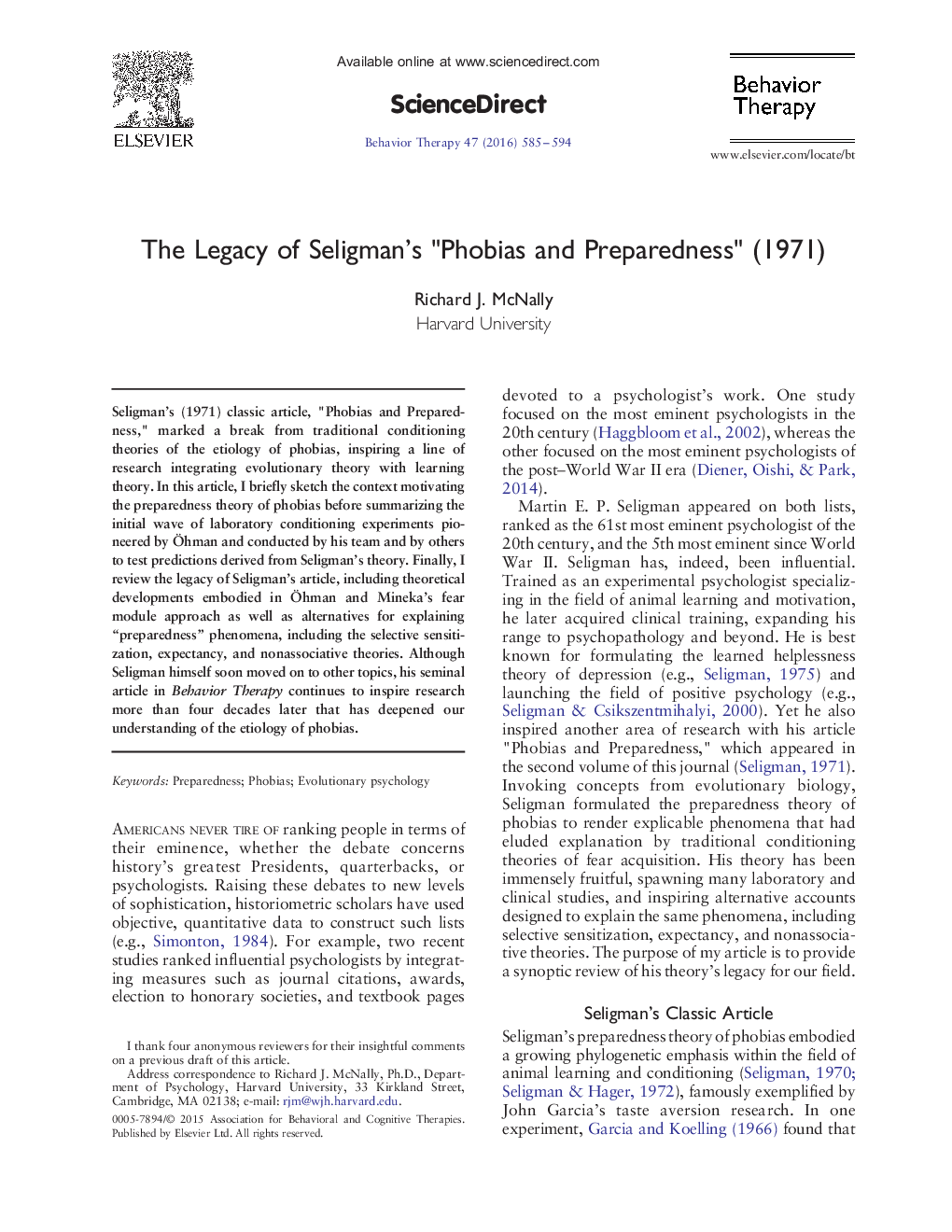| Article ID | Journal | Published Year | Pages | File Type |
|---|---|---|---|---|
| 5038040 | Behavior Therapy | 2016 | 10 Pages |
â¢Seligman (1971) proposed the preparedness theory of phobiasâ¢The theory rests on evolution and conditioningâ¢Key empirical studies and controversies are reviewedâ¢The theory's legacy and contemporary status are assessed
Seligman's (1971) classic article, "Phobias and Preparedness," marked a break from traditional conditioning theories of the etiology of phobias, inspiring a line of research integrating evolutionary theory with learning theory. In this article, I briefly sketch the context motivating the preparedness theory of phobias before summarizing the initial wave of laboratory conditioning experiments pioneered by Ãhman and conducted by his team and by others to test predictions derived from Seligman's theory. Finally, I review the legacy of Seligman's article, including theoretical developments embodied in Ãhman and Mineka's fear module approach as well as alternatives for explaining “preparedness” phenomena, including the selective sensitization, expectancy, and nonassociative theories. Although Seligman himself soon moved on to other topics, his seminal article in Behavior Therapy continues to inspire research more than four decades later that has deepened our understanding of the etiology of phobias.
